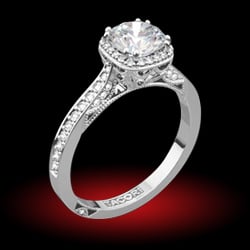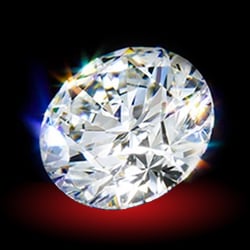maxspinel
Shiny_Rock
- Joined
- Jul 7, 2005
- Messages
- 193
I talked to a very nice gem faceter and dealer today; again, he advised me to spend a little bit more on good clarrty/unheated stones since they are good investment and tend to hold their values better. I have yet to equate gems=investment even though this is the excuse that I''ve been using on my husband so he''ll let me buy more toys. Well, but toys they remain and I still fail to realize any profits from them so far.
I am not a collector but rather a consumer who likes to wear the toys on my hands, instead of storing them in a safe deposit box. Whenever I buy anything, even though supposedly from a wholesaler, when it is time for me to take it in for a trade-up from a store that I did not originally get the stone from, I always lose at least 30% and if I want a cash value, it is even more grim. The designer mounting is worse and when the fashion is out, it is just like scrap metal. On the other hand, I''ve never sold any of my stuff; as I accumulate more and more, I am not sure whether they are junk or treasure.
I once visited an estate store looking for a sapphire and all of their stones under magnification, show some wear and tear with nicks and scratches on the surface. Some of the internal flaws are also horrible and I am not sure if they were orginally like that or it was caused by accidental blows due to daily abuse. Even diamonds, with a Mohr hardness of 10, if worn everyday without protective mount, will also nick/scratch. A IF diamond/gem is doomed to become a VS stone someday???
 These items actually depreciate with everday use unless you keep them in mint condition, which means in a carefully protected box. Then, it defeats the entire purpose of being able to enjoy them.
These items actually depreciate with everday use unless you keep them in mint condition, which means in a carefully protected box. Then, it defeats the entire purpose of being able to enjoy them.
I am not sure that a consumer can really treat gemstones as investment since there are no where to sell. Diamonds are at least better in that respect since there are some kind of grading standard. As far as colored stones, the value is more like "he said"/"she said"; it is worth a fortune when you want to buy and pennies when it is time to sell.
I am not a collector but rather a consumer who likes to wear the toys on my hands, instead of storing them in a safe deposit box. Whenever I buy anything, even though supposedly from a wholesaler, when it is time for me to take it in for a trade-up from a store that I did not originally get the stone from, I always lose at least 30% and if I want a cash value, it is even more grim. The designer mounting is worse and when the fashion is out, it is just like scrap metal. On the other hand, I''ve never sold any of my stuff; as I accumulate more and more, I am not sure whether they are junk or treasure.
I once visited an estate store looking for a sapphire and all of their stones under magnification, show some wear and tear with nicks and scratches on the surface. Some of the internal flaws are also horrible and I am not sure if they were orginally like that or it was caused by accidental blows due to daily abuse. Even diamonds, with a Mohr hardness of 10, if worn everyday without protective mount, will also nick/scratch. A IF diamond/gem is doomed to become a VS stone someday???

I am not sure that a consumer can really treat gemstones as investment since there are no where to sell. Diamonds are at least better in that respect since there are some kind of grading standard. As far as colored stones, the value is more like "he said"/"she said"; it is worth a fortune when you want to buy and pennies when it is time to sell.

















300x240.png)